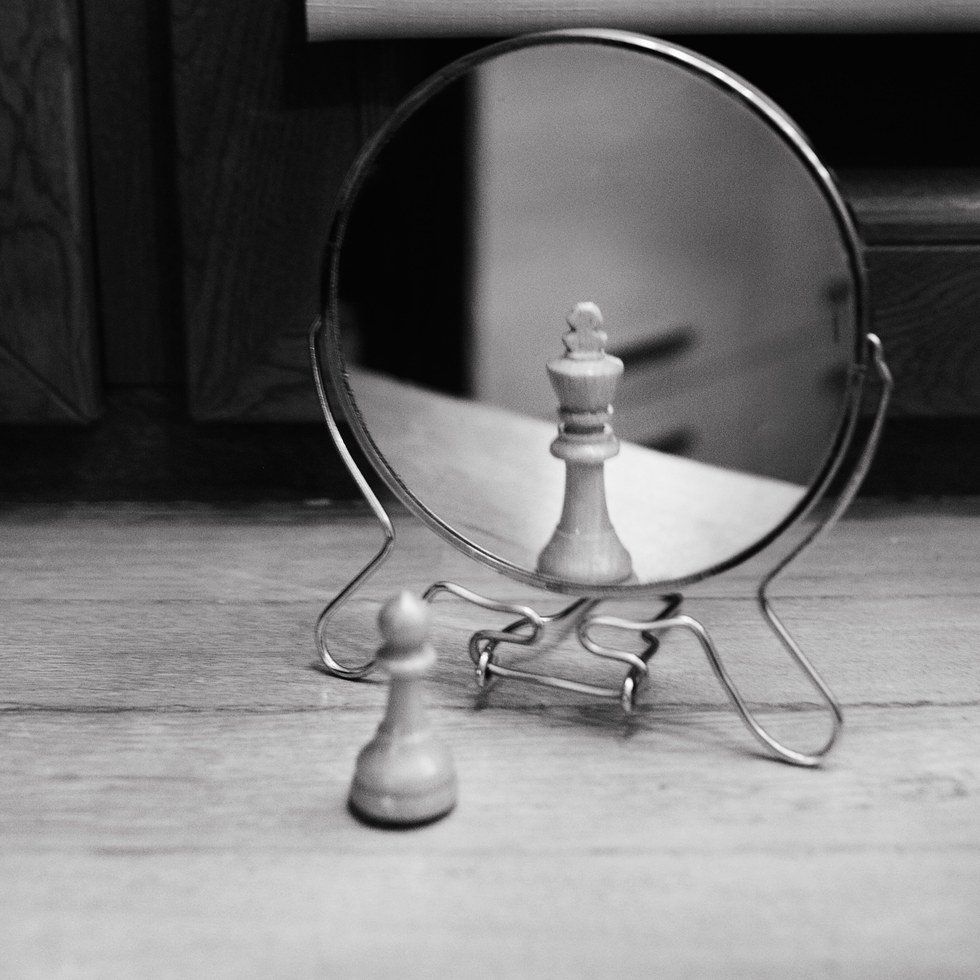Barriers to self-reflection and shifting our thinking away from student deficit models is at best often a challenge. It is certainly a process with many variables. Staying true to Universal Design for Learning (UDL) in our own learning, we are going to evaluate a couple of possible barriers associated with the "Affective Network" of the brain or the "Why" of learning when addressing student deficit models. As a result of better understanding self-reflection (a component of guideline nine of UDL) of our own beliefs, knowledge, and practice, we become more "purposeful and motivated" to change our learning environments to be more conducive to all learners.
As educators we have beliefs, knowledge, and practice about our roles and responsibilities. Our practice (what we "do") and the behaviors associated with them cannot be truly changed or addressed unless we attend to our beliefs and knowledge. Our "beliefs" or the "why" behind what we do must be attended to as well.
To know or address the "why" behind what we do is a process of self-reflection and can not only be uncomfortable, but very personal and emotional. It can also reveal something much more than just a need to change behavior or "practice".
The discipline of psychology informs us about two potential barriers and both are associated with blame! Neither produce valuable intentional change. We can blame ourselves or we can blame others in place of healthy self-reflection that drives purposeful and motivated change.
Let's start with blaming others! When we blame students, their parents, bureaucracy, yada yada yada we actually deflect any real need to change. We see everyone else as the problem and believe we do not need to change, respond, or attend to the real needs and variability presented by our students. We also can consume ourselves with things we have no control over anyway or can be apathetic and see ourselves as helpless agents without any real ability to "do anything about it". This dynamic feeds student deficit models and places students in learning environments that marginalize their "need to feel affirmed and included as valued members of a learning community" (Hammond p. 47). It allows our implicit biases to remain unchecked diminishing our cultural responsiveness. Additionally, when we blame students and see deficits rather than accurately evaluating variability and address barriers in the learning environment we perpetuate learned helplessness and dependent learners.
"Here is the problem. On his own, a dependent learner is not able to do complex, school-oriented learning tasks such as synthesizing and analyzing informational text without continuous support. Let's not misunderstand the point - dependent doesn't mean deficit. As children enter school, we expect that they are dependent learners. One of our key jobs in the early school years is to help student become independent learners" (Hammond p. 13).
UDL translation: When we utilize Universal Design for Learning, we consider and attend to the variability of our students by evaluating the learning environment for barriers to learning, provide scaffolding and support, while providing options for students to become expert learners!
Now for self blame! There is are two paths self blame can take. One leads to healthy productive change, the other does not. When blame is disproportionately turned on one's self devoid of healthy self-reflection it is akin to the same kind of results we get from student deficit thinking only it is turned on one's self. At a distance it can "appear" as some form of introspection that can potentially promote effective change. However, upon closer examination it reveals its own learned helplessness and provides no power or real strategies for effective positive change.
Self reflection that authentically internalizes and evaluates one's own biases, reflects upon their practice and invites constructive (and even outside or peer) feedback, values student voice, embraces variability, leverages diversity, and continually engages a growth mindset understands that looking at ourselves and self reflecting is a positive step toward the continual process of designing learning environments that best meets the needs of all learners. It doesn't cower at or become victim to challenge. Rather, healthy authentic self reflection embraces change and flexibility. Not only does it desire to be resourceful, knowledgeable, strategic, goal-directed, motivated, and purposeful, it pursues expert learning for both itself and its students!
"By three methods we may learn wisdom: First, by reflection, which is noblest; Second, by imitation, which is easiest; and third by experience, which is the bitterest." -Confucius
Hammond, Zaretta. (2015) Culturally Responsive Teaching and the Brain. Thousand Oaks, CA: Corwin.





















